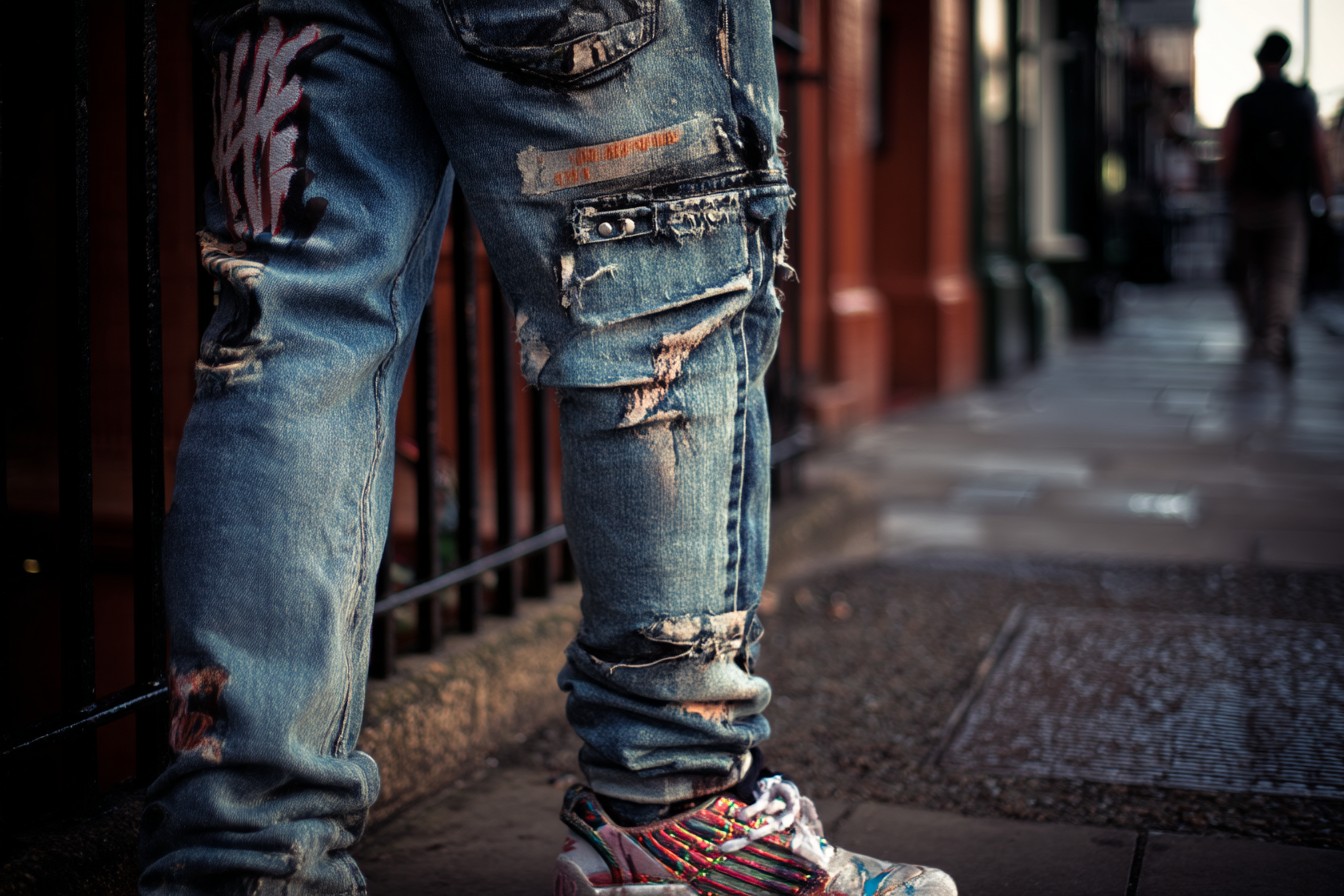I’m staring at my reflection in the changing room mirror of an M&S in Manchester city centre, trying on my seventh pair of jeans of the day. My legs are tired. My patience is fraying faster than the deliberately distressed hems on the pair I’ve just rejected. But I’m a man on a mission – to find out which British high street jeans are actually worth the money and which ones should be left on the rack.
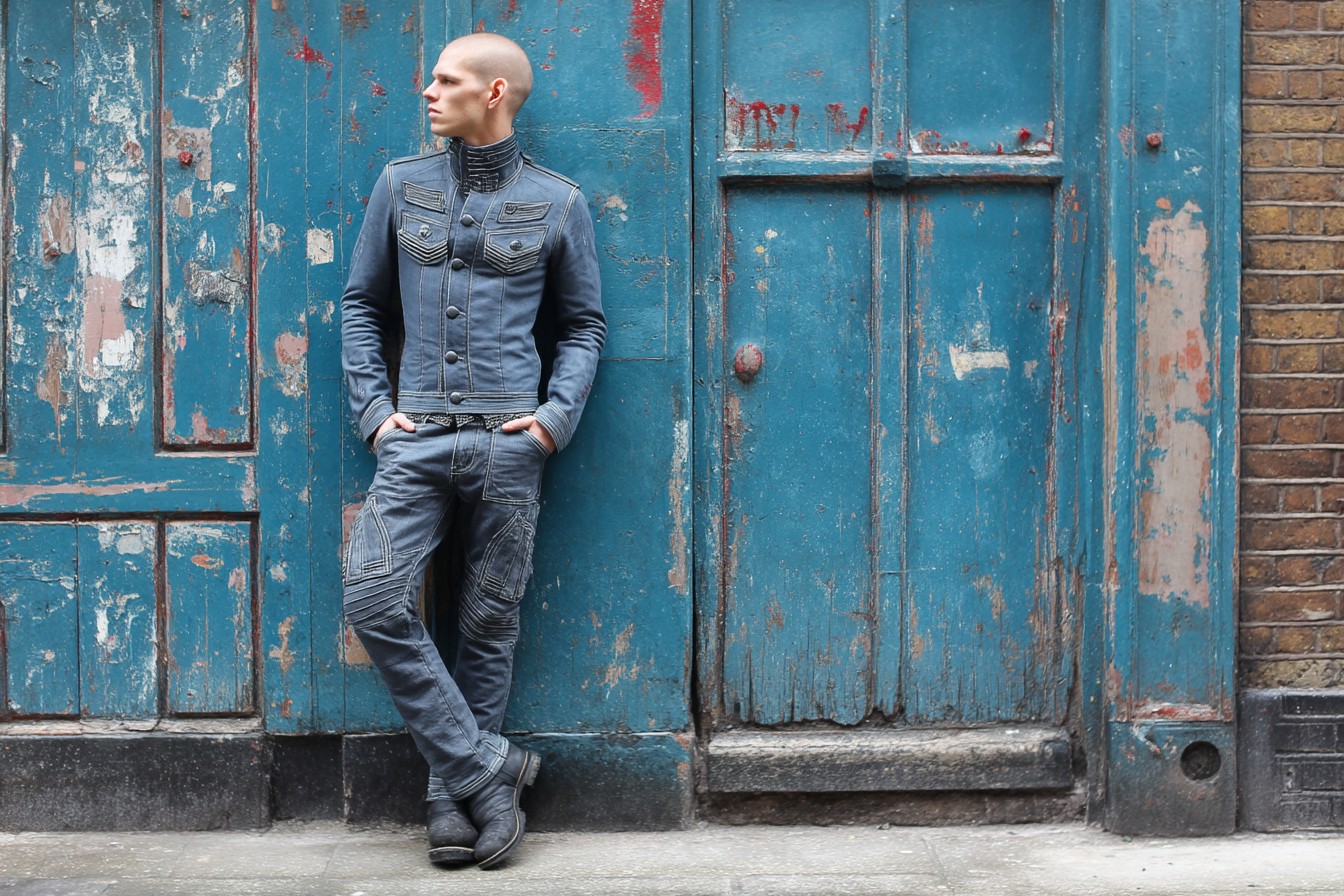
This investigation wasn’t my idea, I should add. It started with Jamie texting me a photo of his crotch. Not as dodgy as it sounds – he was showing me the catastrophic blowout that had occurred in his six-month-old designer jeans during an important client meeting. “£185 down the drain,” he wrote. “Tell me there’s something decent on the high street that won’t bankrupt me or fall apart.”
And so began my denim odyssey. Twelve shops, thirty-four pairs of jeans, and more time spent in changing rooms than any grown man should have to endure. All to answer what should be a simple question: can you get decent jeans on the British high street in 2025? And if so, where?
First, let’s establish what “decent” actually means when it comes to denim. For me, it comes down to four key factors: fabric quality, construction, fit, and longevity. I’m not expecting £50 jeans to match up to Japanese selvedge hand-woven by denim monks, but they should at least hold their shape for more than three wears, maintain color after a few washes, and not fall apart at the seams the first time you crouch down to tie your shoelaces.

Let’s start with the surprise contender that most people walk straight past: good old Marks & Sparks. Their denim game has improved dramatically in recent years, particularly their Selvedge range. The 99% cotton, 1% elastane composition gives you just enough stretch for comfort without sacrificing structure. The indigo pair I’m currently wearing in the changing room has a decent weight to it – around 13oz, which is substantial enough to feel like proper denim but not so heavy it feels like wearing cardboard.
The construction details are where M&S really steps up – chain-stitched hems, reinforced pockets, and bartack stitching at stress points. These are things you normally find in jeans twice the price. At £65, they’re not the cheapest on the high street, but they’re built to last significantly longer than most competitors. The straight fit is particularly good – classic without being boxy, with enough room in the thigh for those of us who don’t skip leg day but not so baggy you look like you’re stuck in the 90s.
My colleague Sasha’s boyfriend James – who’s something of a denim obsessive with a collection that has its own insurance policy – reluctantly admitted that he owns and regularly wears a pair of these. “I wouldn’t tell the denim heads in my forum,” he confessed, “but they’re honestly better made than some £150 pairs I’ve had.”
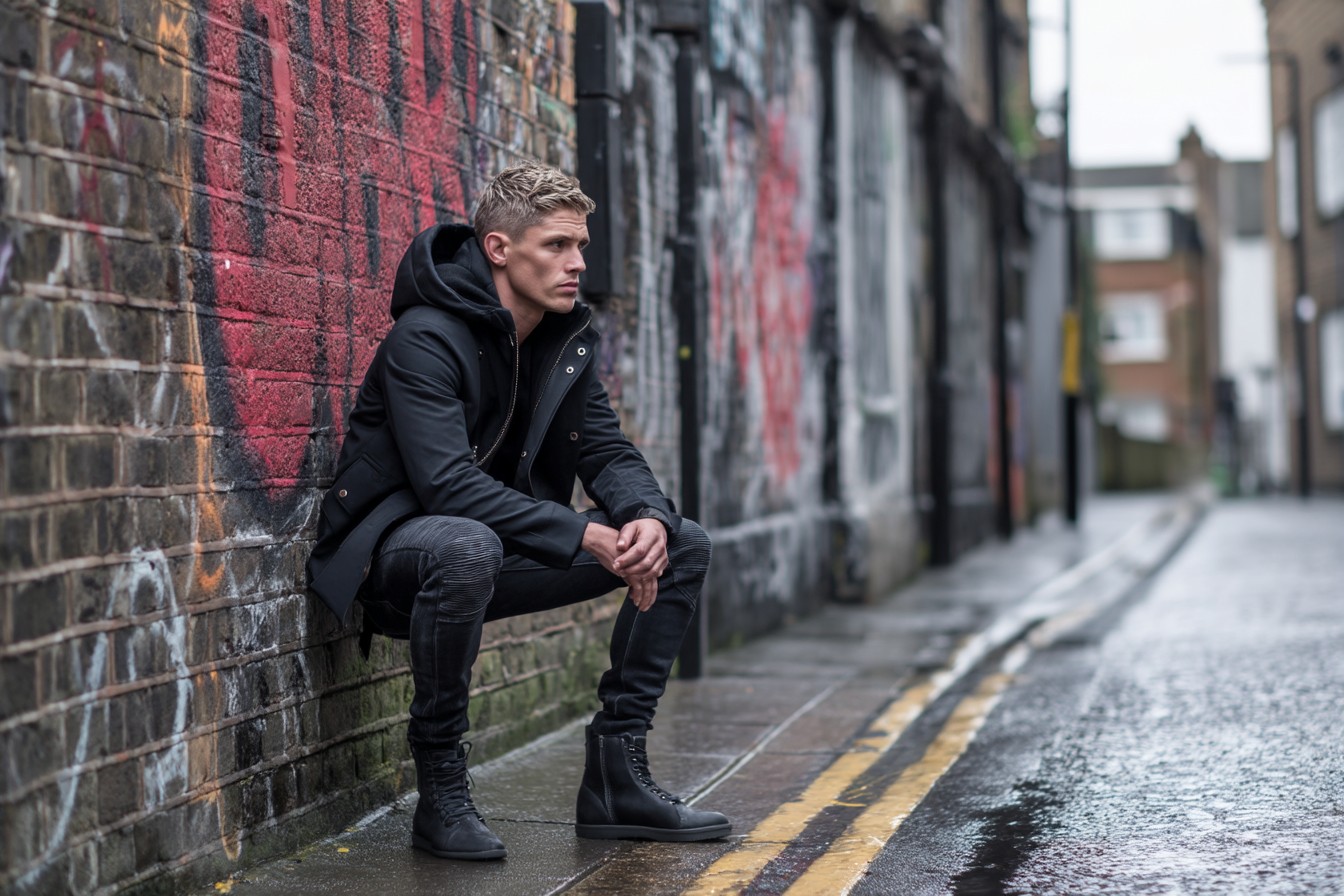
Next up: Uniqlo. No surprises here for the initiated, but if you’ve been sleeping on their selvedge offerings, you’re missing out. The Japanese retailer brings their homeland’s denim expertise to a £49.90 price point that feels like daylight robbery – on our part, not theirs. Their regular fit selvedge is a straight-cut dream with none of the weird tapering issues you often find in high street denim.
The fabric has that coveted dry hand feel that breaks in beautifully over time, developing personality with each wear. I’ve had a pair for nearly three years that have faded naturally in all the right places – honeycomb patterns behind the knees, wallet outline on the back pocket, the subtle whiskers across the thighs that denim enthusiasts get unreasonably excited about. They’ve survived weekly wears and monthly washes with minimal color loss, which is impressive for jeans at any price point.
The only downside with Uniqlo is the limited range of fits. If you’re looking for something other than their regular or slim options, you’re out of luck. Their slim fit is also genuinely slim – great if you have the legs for it, potentially sausage-casing if you don’t.
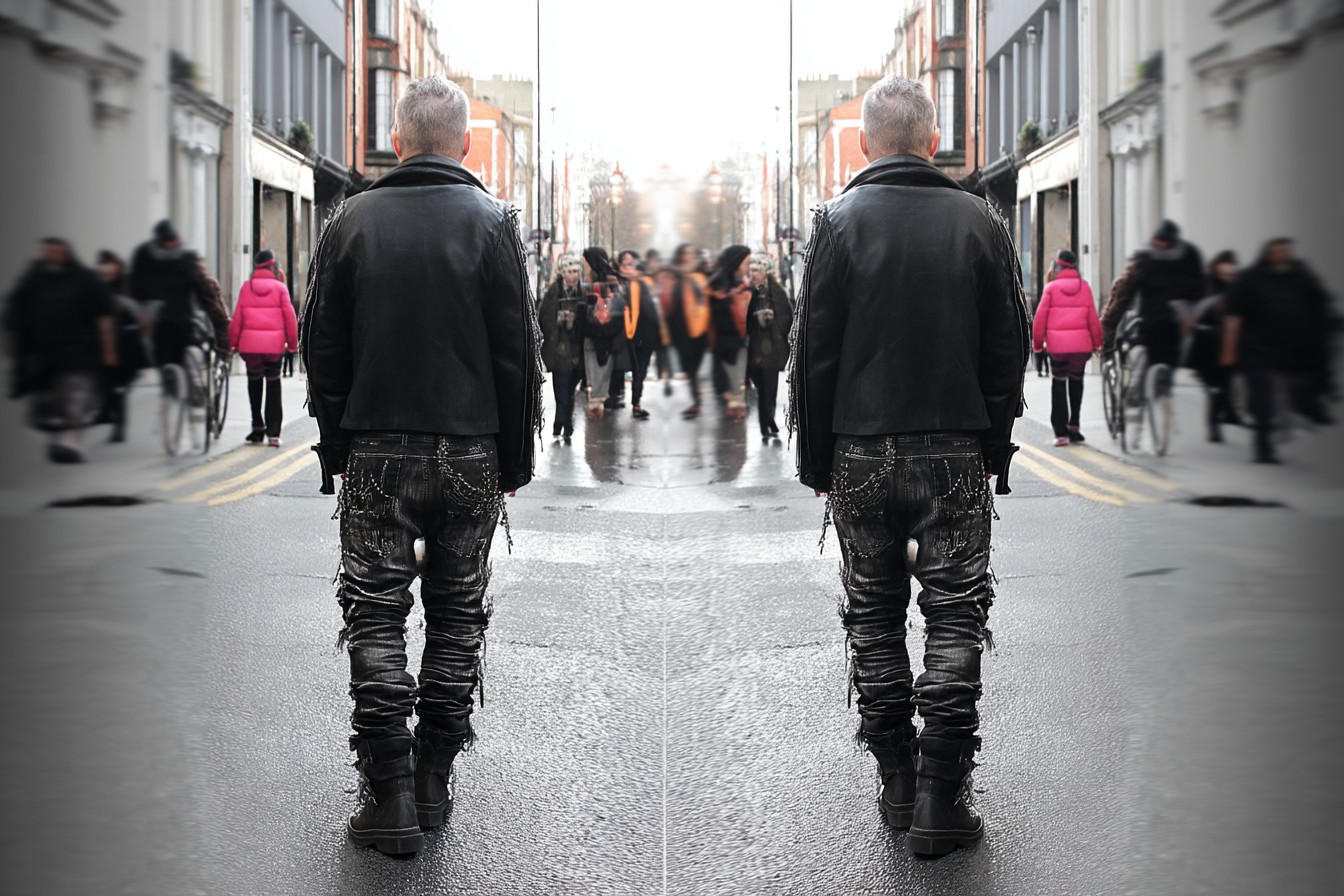
The surprise package in my denim investigation was ARKET – H&M’s grown-up, slightly pretentious sibling that actually delivers on its promises. Their Regular Jeans in rigid denim (£77) are the closest thing I found to premium denim at a mid-range price. The 100% cotton construction means zero stretch, which is a blessing or a curse depending on your perspective. They require breaking in like proper raw denim, which means a week or two of slight discomfort before they mold to your body. It’s a small price to pay for jeans that will potentially last years rather than months.
The construction details are impressive – copper rivets, chain-stitched waistband, selvedge outseam, and a cut that somehow manages to be contemporary while avoiding any trendy flourishes that will look dated next season. I particularly appreciate the lack of contrast stitching and unnecessary detailing – these are grown-up jeans that let the fabric and fit do the talking.
Now for the most controversial entry: Zara. I know what the denim purists are thinking – fast fashion doesn’t belong in a conversation about quality. And generally, they’d be right. But Zara’s Premium Denim Collection is a genuine step up from their regular offerings and worthy of consideration if you’re on a tighter budget. At £45.99, their slim fit 100% cotton option offers reasonably good construction with decent weight fabric.
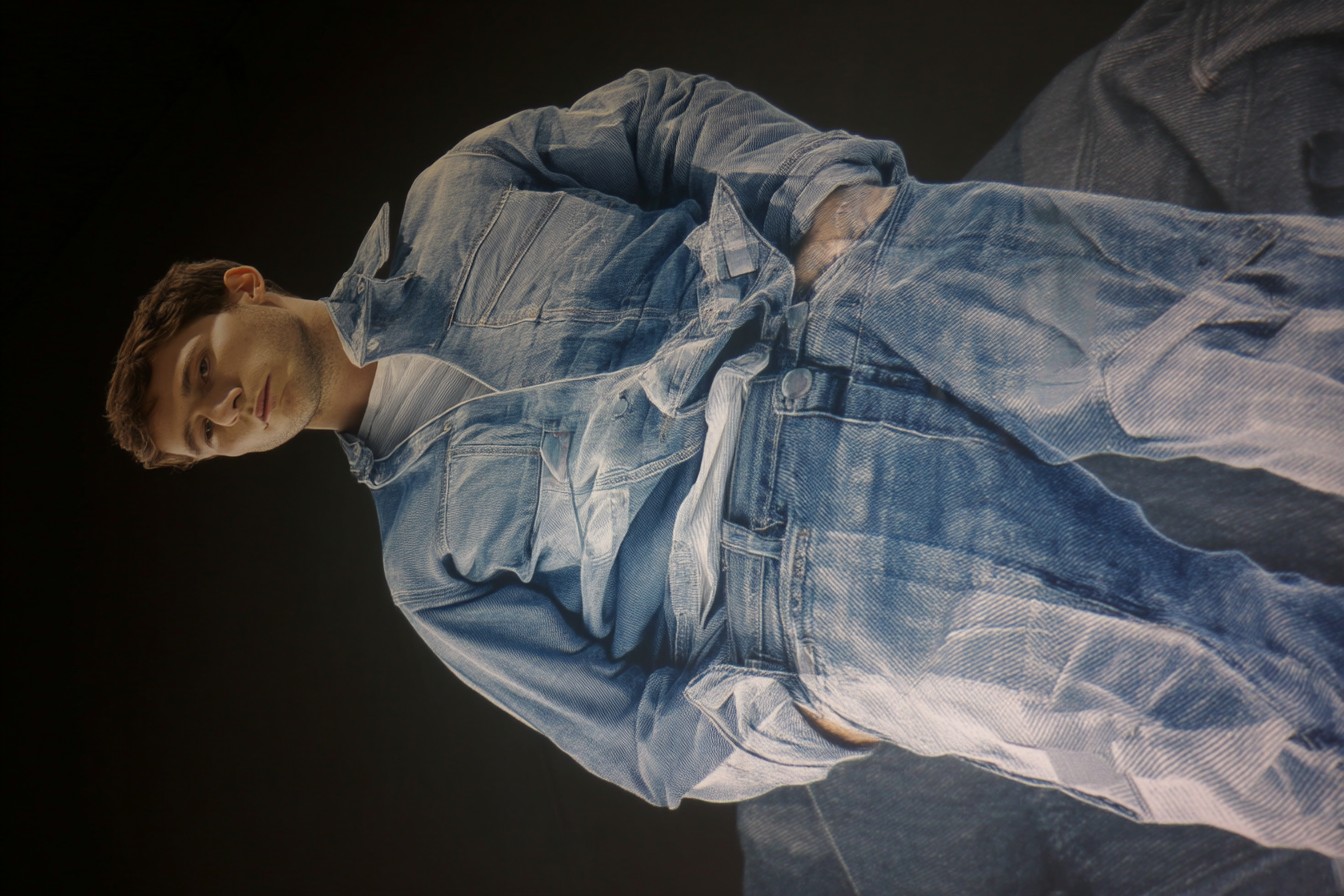
Are they going to last five years of regular wear? Probably not. But the price-to-quality ratio is surprisingly favorable, especially if you’re someone who likes to change styles more frequently. I’d put their expected lifespan at about 18 months of regular rotation before fading or structure issues become noticeable. Not amazing, but not terrible for the price point.
The fit is where Zara excels – their slim cut somehow flatters almost every body type I’ve seen it on. The slight taper from knee to ankle creates a silhouette that works as well with trainers as with boots, making them more versatile than many higher-priced options. Just be prepared for some color transfer in the early days – my white sofa still bears a faint blue reminder of the first time I wore a new pair.
On the disappointment front, let’s talk about Topman (or what remains of it under ASOS). Once the go-to for affordable denim with decent styling, the quality has taken a noticeable dive. The three pairs I tried had inconsistent sizing (I apparently range from a 32 to a 36 inch waist depending on the style, which is biologically impossible), thin fabric that already showed stress lines in the changing room, and construction that felt like it was one enthusiastic stride away from disaster. Save your money.
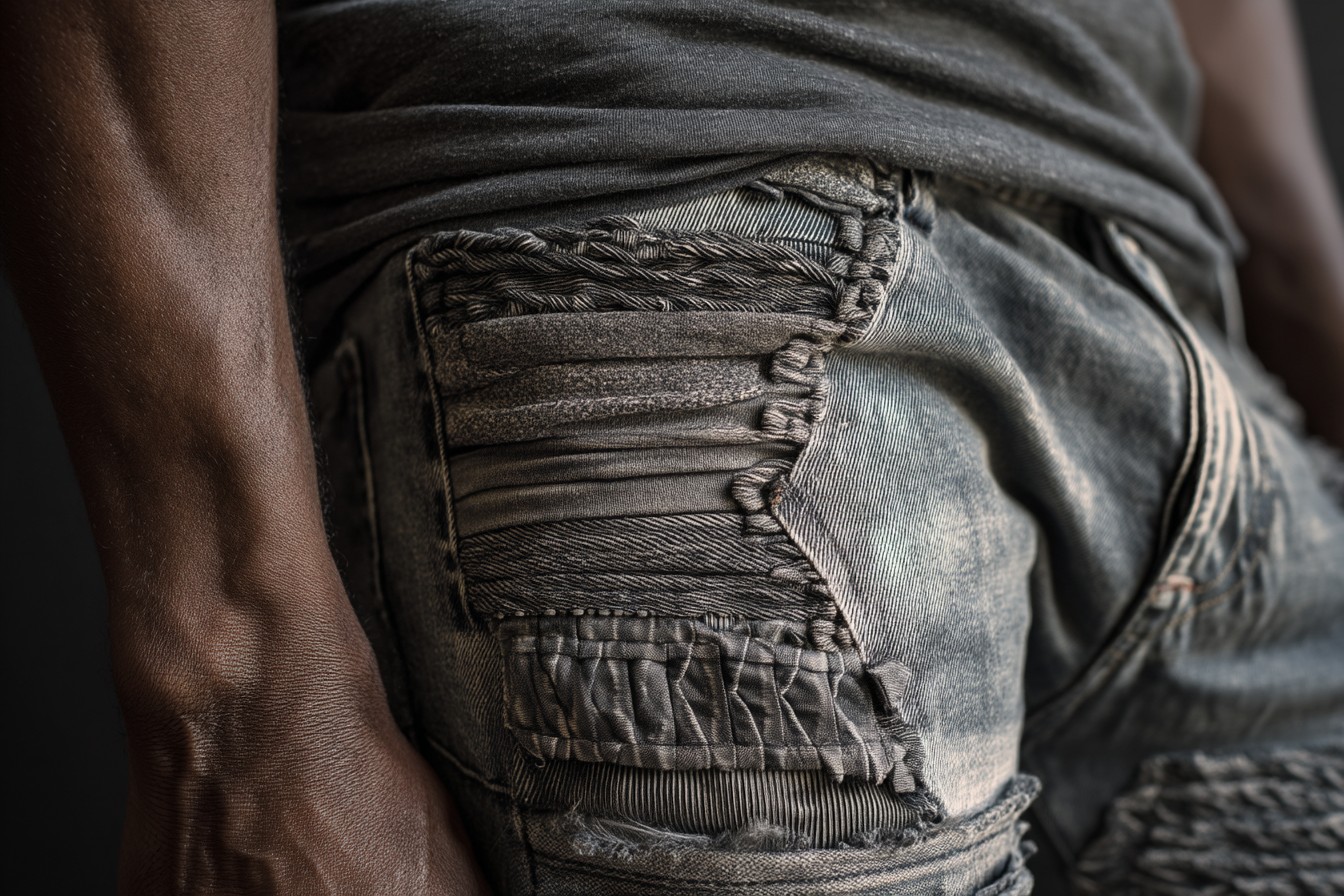
Similarly underwhelming was River Island, whose jeans looked promising on the hanger but revealed their shortcomings in the fitting room. The fabric felt insubstantial, the stitching was already showing stress points at the seams, and the fit was oddly proportioned – tight in the calf but baggy at the knee, creating a silhouette that flattered precisely no one. At £45, they’re not cheap enough to justify these compromises.
A dark horse worth considering is COS. Their straight-fit jeans (£75) offer a compelling middle ground between fast fashion and premium denim. The fabric has proper heft to it – I’d estimate around 14oz – and the construction details show attention to quality. The fit is more relaxed than most high street options, which makes a refreshing change from the skinny and slim cuts that still dominate despite the wider-leg trend supposedly taking over.
What sets COS apart is the finishing – the hems are properly chain-stitched, the hardware is substantial without being flashy, and the pockets are both practical and properly reinforced. They also offer a wider range of lengths than most, which is a godsend for anyone significantly taller or shorter than average. I’m 6’1″ and perpetually stuck between regular jeans that finish too short and long ones that need hemming, but their 34″ inseam option is spot on.

My most controversial opinion might be about Next. Yes, Next – purveyor of acceptable business casual to the masses and preferred shopping destination of dads nationwide. Their selvedge denim jeans (£45) are legitimately good, particularly the straight fit. The fabric has decent weight and ages well, the construction is solid if unspectacular, and the price point represents excellent value.
I’ll admit I was skeptical. My previous experience with Next denim involved a pair purchased in desperation for a last-minute camping trip in 2017 that developed a mysterious hole in an unspeakable location within 48 hours. But credit where it’s due – their denim offering has improved dramatically. I’d still opt for M&S or Uniqlo given the choice, but if you’re already in Next buying sensible knitwear, their jeans are worth a look.
After my exhaustive (and exhausting) research, I returned to Jamie with my findings. He was skeptical, particularly about M&S – “But that’s where my dad shops” – but agreed to try a pair. Three weeks later, I received another crotch shot, this time with a thumbs up in frame. “Converted,” read the caption. “Bought two more pairs and still spent less than on the designer ones.” Mission accomplished.
The truth about high street denim in 2025 is that there are genuine gems hidden among the polyester-heavy, paper-thin offerings that dominate the market. The sweet spot seems to be between £50-80, where corners aren’t being cut quite so aggressively and some actual thought has gone into construction and fabric sourcing.
My final hierarchy, if you’re looking for the TL;DR version: M&S Selvedge and Uniqlo Selvedge tie for first place as the best value-to-quality ratio. ARKET comes in a close second, offering the most “premium” experience at a still-reasonable price. COS takes third place for those seeking a more relaxed fit and willing to spend a bit more. Next and Zara round out the “worth considering” category, with everything else falling into the “approach with caution” territory.
The real revelation, though, is that the landscape has changed. Five years ago, this article would have been a series of warnings rather than recommendations. The gulf between high street and premium denim has narrowed significantly as retailers have recognized that men are increasingly knowledgeable about what constitutes quality and willing to spend a bit more for something that lasts.
Are any of these jeans going to develop the character and longevity of a pair of Iron Hearts or Blackhorses? Of course not. But they’re not trying to be. What they offer is a solid middle ground – jeans that won’t fall apart after three washes, that hold their shape reasonably well, and that won’t require you to eat instant noodles for a month to justify the purchase.
And in a world where clothing prices are rising faster than wages, finding that middle ground feels increasingly important. So next time your jeans give up the ghost in an important meeting (or anywhere else, for that matter), you’ll know where to go. Just prepare yourself for more time in changing rooms than any sane person would willingly endure. My legs may never forgive me.
